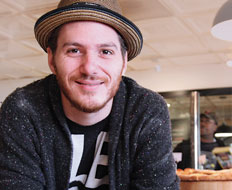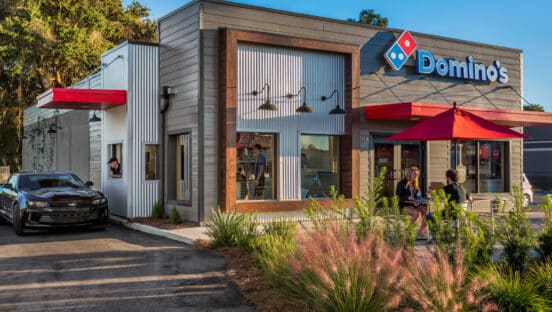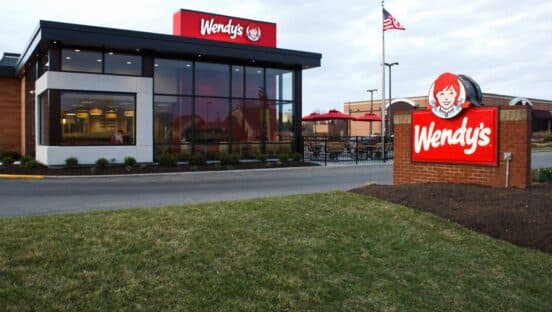Spike Mendelsohn is a reality TV star. For those who watch Top Chef, he needs little introduction. After eight seasons, the Bravo hit series just wrapped an all-star version of its famous competition show where cheftestants are pitted against each other to earn industry respect, cash prizes, and, perhaps most importantly, national exposure. Mendelsohn first appeared on the show as a contestant in Season 4, then again as a guest judge in Season 6, and this season competed against past cast members in an all-out, drama-filled culinary cut throat.
But that is not Mendelsohn’s day job. When he’s not jet-setting across the country or competing in quick-fire competitions, he runs two Washington, D.C., restaurants, Good Stuff Eatery and We, the Pizza. The former is a gourmet burger joint focused on fresh, local ingredients that draws lunchtime lines around the building. The latter is an Italian-American pizza concept that offers gigantic pies, beautiful specialty sodas, and gourmet gelato.
As one might guess by his appearance, Mendelsohn’s restaurants cater specifically to the young and hip. His ability to attract the “in” crowd is particularly impressive, seeing as the stores are in the shadow of the U.S. Capitol, an area of D.C. infamous for hard-working interns, not iPhone-toting hipsters. We, the Pizza—affectionately called simply We by Mendelsohn and his crew—is clean with white and black subway tiles, red bar stools, and a gigantic picture of Woodstock.
Don’t let the 1969 culture reference throw you, though. This is a gourmet restaurant for today’s consumers, and Mendelsohn is not like the stuffy, French-trained chefs of the past. Although he’s a graduate of the Culinary Institute of America, the country’s premier culinary school, and has experience cooking in France, Spain, and the famed Le Cirque in New York City, he wears a fedora and no chef coat when he’s behind the counter.
It’s not just the uniform that’s different at We. Americans learned more than a decade ago thanks to Anthony Bourdain that not all of our nation’s greatest chefs are polished around the edges—or polished at all, for that matter. We’re used to chefs being edgy and unshaven. But what sets Mendelsohn and his pizza parlor apart from his predecessors goes beyond his appearance.
“I feel like fine dining is really too stuffy,” he says, leaning casually against a stainless steel table in We’s kitchen. “One of the huge new chef trends is doing things more authentic with no fuss, especially when you surround it with a less-pretentious environment.”
We certainly achieves that. Bar stools, not white-tablecloth four tops, make up the dining room, if it can be called that. The chairs outside for sidewalk seating are bright red plastic. Add to all of that the tunes of Timbaland pumping through the speakers and you get the feeling that this new chef trend makes restaurants that are one part hole in the wall, the other part nightclub.
“I think it has to do with the economy and our generation,” Mendelsohn says. “It’s cool and hip and fast.”
Mendelsohn throws out the term fast casual within the first 30 seconds of the interview, making sure to differentiate between it and fast food. “I really enjoy this fast-casual concept,” he says, explaining that the lighter time commitment (when compared with a traditional fine-dining restaurant) allows him a life outside the four walls of the store.
The pace of the restaurant is more like the Macarena to fine dining’s waltz. There’s a buzz on both sides of the counter, and customers can (gasp) see the kitchen staff at work behind a
small glass divider that acts more as a germ shield than a real wall.
“America is pretty young as a food culture,” Mendelsohn says. “As a country we have a lot of catching up to do in the ways that we apply thought to food. And we’ve come a long way in the last 20 years. That’s exactly why people have started appreciating these types of concepts, because their knowledge of food is a lot better than it used to be.”
By “these types of concepts,” Mendelsohn is referring to chef-driven restaurants that serve just one course and don’t cost customers an arm and a leg. Roy Choi’s Kogi BBQ truck in Los Angeles is another prime example. So is Richard Blais’ Atlanta-based Flip Burger. All three, and countless others popping up across the country, are headed by young chefs bored with being locked away in a fancy kitchen without any customer interaction. These new types of concepts allow them the freedom to experiment (what can’t go on a pizza, taco, or burger?) without giving recession-tired consumers sticker shock.
That’s not to say that We is your basic pizza joint, either. Mendelsohn sources as many ingredients as possible from less than 100 miles away. And when it comes to the big pizza players, he thinks comparisons are pointless. “Domino’s and Pizza Hut are not playing in the same space as me, because I make everything fresh and get it from local farmers. That’s not what those other concepts are about,” he says.
Mendelsohn “does not reinvent the wheel” with his pies. “We offer all the classics that you’d see in a regular pizzeria, but we also have our creative, chef side,” he says. “The real difference here is the emphasis on ingredients and technique and how we cook the pies. That’s what makes the pizza really good.”
Along with two other chefs, Brian Lacayo and Mike Colletti, Mendelsohn created an adventurous menu that strikes a comfortable balance with familiar flavors. “Eventually we’ll have seasonal specials that run once a week or once every other week,” he says, looking down at a pizza topped with potatoes that’s “just not selling.” It’s the pizza’s swan song and, in a quick reminder that Mendelsohn’s real love is food and not reality television or hip hangouts, he says solemnly to the pie, “I’m sorry, dude. Everyone has their time.” The crew laughs, but you get the feeling that Mendelsohn is a tad choked up about the pizza’s farewell.
[pagebreak]
“People are back to comfort foods,” he says. “We took too many steps in the wrong direction with our food culture. We got a little too chic with food. Food is so great; you don’t want to mess with it too much.”
It’s with that in mind that Mendelsohn, Lacayo, and Colletti created We’s menu. Of course, there are basics like cheese and pepperoni, but the real attention-getters are the ones that make it obvious there’s a chef behind the counter. Only someone trained in France would use bechamel on a pizza, after all. But even without having worked in a Three-Michelin-Star New York restaurant, consumers can figure out the menuboard pretty easily, and no pizza has more than a handful of ingredients, a fact that keeps the menu from becoming cluttered and consumers from getting bogged down in gourmet speak. Other culinary adventures include the Salami Pie with Bianco di Oro Salami and the Forest Shroomi’n Pie with truffles and fresh thyme.
Mendelsohn is confident that he’s offering what consumers want—a familiar food with a focus on gourmet ingredients in a laid-back restaurant for a good price. “There are guys out there who would take all the flavors on this slice and give you a little tasting portion with foam on it. Well, congratulations on your cheddar foam, but you’re not going to feel satisfaction from eating that. We got too smart with foods.”
The most frou-frou thing on We’s menu is its series of specialty sodas, which outsell the restaurant’s traditional fountain drinks despite being more expensive. With names ranging from cute (I’ve Got an Orange Crush on You) to the Wu-Tang-Clan-inspired (C.R.E.A.M. Soda), the 13 soda varieties Mendelsohn created are made with fresh Italian soda, fruit purees, and fresh herbs for $3 each.
“They’re really unique and special,” he says of the drinks. “It’s always about educating people and showing them new flavor combinations, and the beverages are a great example. You have a basic beverage fountain, but we also offer fresh sodas against it.”
While Mendelsohn only touches on the woes of the high fructose corn syrup found in traditional sodas, his real concern is focused on “the food mafia.” In layman’s terms: large fast food companies. “They have such control over the markets and the supply and demand. It’s hard to go up against them,” he says. “It’s crazy to think about how huge these companies are. It’s why we’re faced with such a problem with obesity in America.”
In an effort to pull Americans, specifically those living in D.C., out of their fast food “rut,” the young chef is working at local schools to educate students and parents on proper nutrition and meal prep. The activities are part of the Chefs Move to Schools program championed by the First Lady under her anti-obesity campaign, “Let’s Move!”
“When I first moved here, I came from New York City and didn’t really have a cause,” Mendelsohn says. “But moving to D.C. was a reality check. We started having all these young customers who all had causes and initiatives. Before you know it, I was getting inspired by the clientele.”
Mendelsohn also helps maintain a rooftop garden at a charter school in the area—another sign that he’s motivated more by his connection to Gen Y culture than his culinary pedigree. “You see a lot more chefs involved in that today because it’s so important,” he says.
Although it’s true that Mendelsohn is the archetypal hot, young chef for the Me Generation, he is not the first to break from the culinary establishment and venture into the world of quick service. Nearly 20 years ago, another young graduate of the Culinary Institute of America was working as a sous chef for the famous Jeremiah Tower and decided to start a burrito concept with a handful of menu items and a focus on local ingredients and humanely raised proteins. Chipotle is now a 1,000-unit international brand and its founder, Steve Ells, is an ihndustry icon.
What really sets this new breed of chefs apart from trailblazers like Ells, however, is not their interest in quick service or local ingredients, it’s how they approach the restaurant business in general.
“I know the value of doing Top Chef,” Mendelsohn says frankly. He also knows the value of Twitter, Facebook, book deals, and lots of press. In fact, just as our interview was ending, a photographer from the newspaper Politico came to repeat the process all over again.
Mendelsohn represents a new kind of chef, one that we’ll likely see more of over the next decade. He doesn’t look like what we’re used to. He works with the White House, tweets in his spare time, competes on reality TV, and isn’t interested in opening the country’s next fine-dining establishment—especially if there’s any talk of foam on the menu.
What he wants is a slow and steady expansion of his own brands. First, it will be Good Stuff Eatery, the burger franchise, which will move into Chicago this year as well as a few other D.C.-metro locations. There will also be the addition of a food truck called Sixth & Rye in D.C.
“We’re basing our expansion on finding people we want to work with,” he says. “We don’t have exact states. We want to work with people who emulate what we’re about as a company.”
After talking to Mendelsohn, it comes as little surprise that he wants to buck traditional thinking when it comes to even the logistics of his expansion.
Mendelsohn is not like the chefs we are familiar with. He’s young, talented, plugged in, and most of all, hungry.
For more Top Chef reading, go to QSR's exclusive interview with this season's winner, Richard Blais, here.






